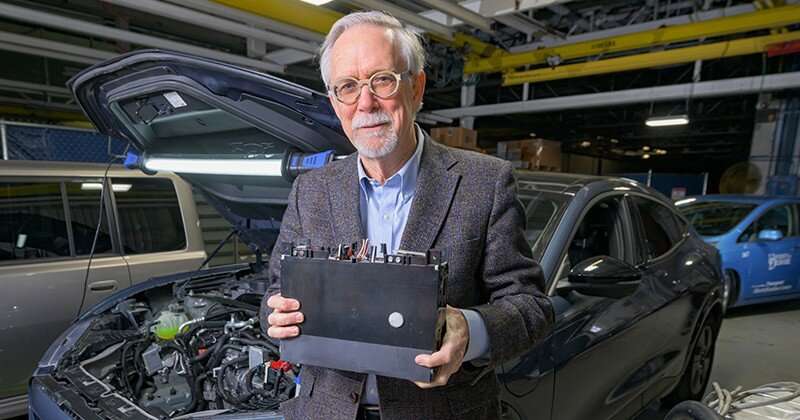
One nagging concern U.S. consumers have about electric vehicles (EVs) is the ability of these battery-operated cars and trucks to get you where you want to go without running out of power. Nobody wants to be stuck at a charging station for long in the middle of a trip, or worse, be stranded without a charging station nearby.
"What we did was figure out how much people drive a year, distinguishing every single trip and stop, and then overlaid that with all the possible EVs you could buy," said the article's lead author, Willett Kempton, professor of marine science and policy and of electrical and computer engineering at UD. "If you know how far you need to drive, our data on range and charging speed will tell you what EVs will work for you."
The team's findings underscore that, like sneakers, EVs can get you where you want to go, and some can help you do it faster—but the most expensive option may not be worth the investment.
"One misconception out there is that we're not going to be able to replace gasoline unless we have bigger batteries and super-fast charging," Kempton said. "But what this study tells us is that there is a segment of the market—between 25% to 37% of the driving population—where EVs with smaller batteries, combined with community charging, can meet all of their driving trip needs."
This combination of lower-price EVs and lower-cost community recharging could go a long way in broadening the accessibility of EVs to more U.S. drivers.
Kempton notes that this minority of drivers who are better matched to smaller-battery EVs represents a diverse array of people, including many urban dwellers, those who use air or rail for longer trips, some low-income Americans, and some elderly Americans, among others.
"If you add up the categories, these people need no more than a moderate-size battery vehicle," Kempton said. "And that EV with a smaller battery that's right for them will cost a lot less—up to $10,000 less—than an EV with a big battery."
Based on the team's detailed analysis, Kempton said that a smaller-battery EV would meet almost, but not all, driving needs for the bulk of the population, if some adaptations are acceptable. The team's research showed that a 150-mile vehicle would meet the majority of drivers' needs if they are willing to make adaptations to their driving and recharging plans for longer-distance trips only 3–4 times a year.
According to the Federal Highway Administration, light vehicles in the U.S. travel, on average, one hour per day and 35 miles. But that number can be misleading, according to study co-author Nathaniel Pearre, from Dalhousie University, who did much of the statistical analysis.
"The average daily distance a person drives doesn't inform how big a battery is needed for that person's longest distance car trip of the year," Pearre said. "We started with GPS (satellite positioning) data from each car and calculated every trip and every stop for the year. During the trips, the battery is depleted, and the stops are opportunities for charging."